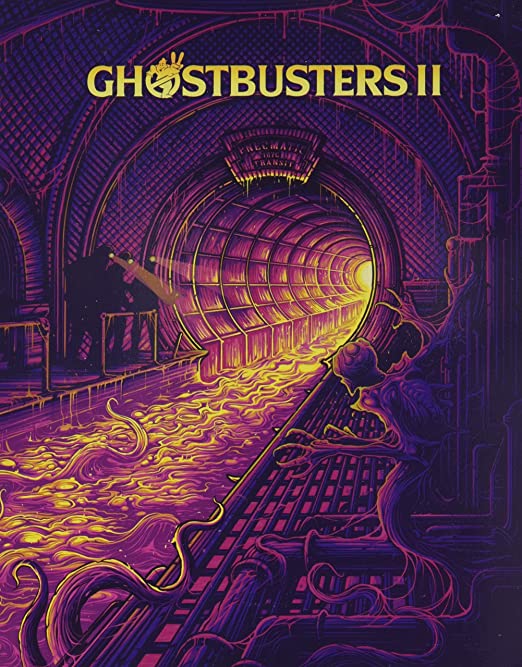
Columbia wanted to keep the gravy train rolling, so they quickly got a French studio, DIC Entertainment on the job. In 1986, they launched a Ghostbusters tie-in cartoon. The Ghostbusters name actually belonged to Filmation (most known for Masters of the Universe), and they settled with Columbia on the rights to the 1984 movie name but were then turned down by Columbia when they asked to make the cartoon. DIC knew they had to go different route, so as a dig at Filmation, they named their show “The REAL Ghostbusters.” Filmation also released their own Ghostbusters show called “Ghostbusters” that just so happened to be released five days before DIC’s “Real Ghostbusters” baser upon their 1970’s live action show.
The fourth writing will be about an often panned, not-quite horror film— “Ghostbusters II.” After the 1984 hit made nearly $300 million off a less than $30 million dollar budget, a sequel was all but in the can… or so you would think. Ivan Reitman wanted to move on to other things, and it seemed like the Ghostbusters intellectual property would languish in the vaults of Columbia… unless they had anything to say about it!
The DIC show went on to be a huge success, and inevitably the men in suits at the top wanted to change the cartoon including making Slimer, the green ghost from the film, a focal character going as far to rename the show “Slimer and the Real Ghostbusters.” Despite their best efforts to seemingly sabotage the show, it lasted seven seasons and over 170 episodes and churned out an endless stream of merchandise including lunchboxes, sleeping bags, toothpaste, comic books, and of course toys. Ghostbusters was now more popular than it had ever been.
This led to a lot of pandering to kids the second time around. The first “Ghostbusters” got a PG rating even though it had adult oriented jokes and some cruder language. The PG-13 rating actually wouldn’t be used until a few months later with the release of “Red Dawn.” Janine’s character design altered to make her look more like her depiction in the cartoon, and Slimer, who at first was going to be left out entirely, was added in at the behest of the studio due to his popularity. Interestingly enough, Ernie Hudson has shaved his mustache, but it was by happenstance and not to make him look more like his cartoon counterpart (as a side note, Hudson auditioned for the part of Winston in the cartoon and was turned down in favor of Arsenio Hall).
The ghosts were also made less ghoulish and scary to appeal to the kids, but the main villain, Vigo, was ominous and foreboding enough for the rest of them. The flowing pink slime (made, of course, to look like the slime being sold in stores) was given a life if it’s own. Various concoctions and practical effects were used to make the slime bubble, pop, and ooze on its own to make it feel sentient. The concept of this negative slime was well executed, but for the ending of the film, what could top a giant marshmallow man? Enter Lady Liberty. The Ghostbusters use an NES Advantage Joystick to man the Statue of Liberty and eventually go to take on Vigo and get back baby Oscar.
I would give this film 8 rivers of slime out of 10. The positive slime coupled with the singing of the people of New York help to defeat Vigo and replace his portrait with a comedic portrait of the four heroes. The duality in storytelling of the Ghostbusters going from washed up has beens with nobody on their side to the saviors of the city is fantastic and on par with or better than the original storyline. Most of the dialogue was actually ad-libbed on the spot, and the dynamic isn’t as crisp as the original, but it still has its moments like the courtroom scene which could be the best scene from either film. Is it as good as the original? No it isn’t, but with the cards it was dealt, it made the best out of it and gave us a film that is over criticized because it was different.
